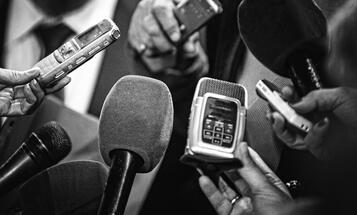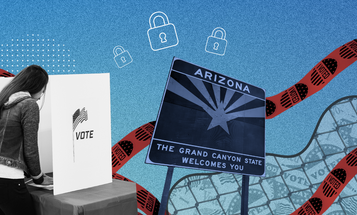
In-Person Voter Fraud Just Doesn't Happen
Last month, in Pennsylvania, a state judge allowed Pennsylvania’s strict voter identification law even though the state has stipulated that “there have been no investigations or prosecutions of in-person voter fraud in Pennsylvania; and the parties do not have direct personal knowledge of any such investigations or prosecutions in other states.” The state is not even “aware of any incidents of in-person voter fraud in Pennsylvania.” Barring a successful appeal, the result is that as we approach the 2012 elections, less than three months away, perhaps as many as 758,000 Pennsylvanians who do not have the identification needed to vote will be disenfranchised. Just what is going on here? If the state is not aware of any incidents of in-person voter fraud, why the great push for voter identification?
At some point in our nation’s history, someone realized that it is not just how people vote that determines election outcomes, it is also who votes.
As it turns out, the forces in play behind these new developments are not that new at all. At some point in our nation’s history, someone realized that it is not just how people vote that determines election outcomes, it is also who votes. Since its founding, our democracy has been made ever more robust through greatly expanding access to the ballot, but the past century and a half has also seen attempts by various actors to determine election results by suppressing votes among parts of the population, typically through poll taxes, literacy tests, identification requirements, and vote “caging”—using mass mailings to addresses in certain neighborhoods and looking at returned mail to determine which voters to challenge at the polls.
These tactics for limiting access to the ballot have at one time or another been employed by members of all political parties under the guise of “election reform,” but for the past fifty years or so, they have been practiced solely by supporters of the Republican party. And, in fact, we are seeing a resurgence in their use, as many state legislatures have added voter identification requirements and other measures to restrict voting to their election laws in recent years. While the public argument for these rules is typically made along the lines of protecting against voter fraud, in actuality the practice is a classic strategy of voter suppression, echoing past attempts to take away certain Americans’ right to vote.
Republicans say that voter fraud is rampant and Democrats are going to steal the election. That's old news. In the nineteenth century, both parties perennially accused the other of trying to steal the election. Their goal? To enact “reforms” that would limit access to the ballot for citizens likely to vote for the opposing ticket.
Today, the vast majority of voter suppression efforts are made by Republicans, and their hyperbole is certainly more caustic, and more importantly, it is patently false.
The tactic currently being used is exactly the same as it was more than one hundred years ago—a few examples of voter fraud are cited over and over again to make it seem like the problem is widespread, when the evidence actually indicates it isn’t. Furthermore, the examples given today are almost never about fraud at the polling place, something they claim is occurring across the country. And, the stories they tell are often ancient tales that upon further examination prove not to have involved fraud at all, but rather are the result of clerical errors.
In the old days, there actually was some vote fraud at the polls (though perhaps not as much as is believed, given the American mythology around that era).
Today, voter fraud at the polling place really just does not happen. Study after study has shown this. Most recently, a nationwide analysis by the reporting group News21 of 2,068 alleged election-fraud cases since 2000 shows that “while fraud has occurred, the rate is infinitesimal, and in-person voter impersonation on Election Day . . . is virtually non-existent.”



